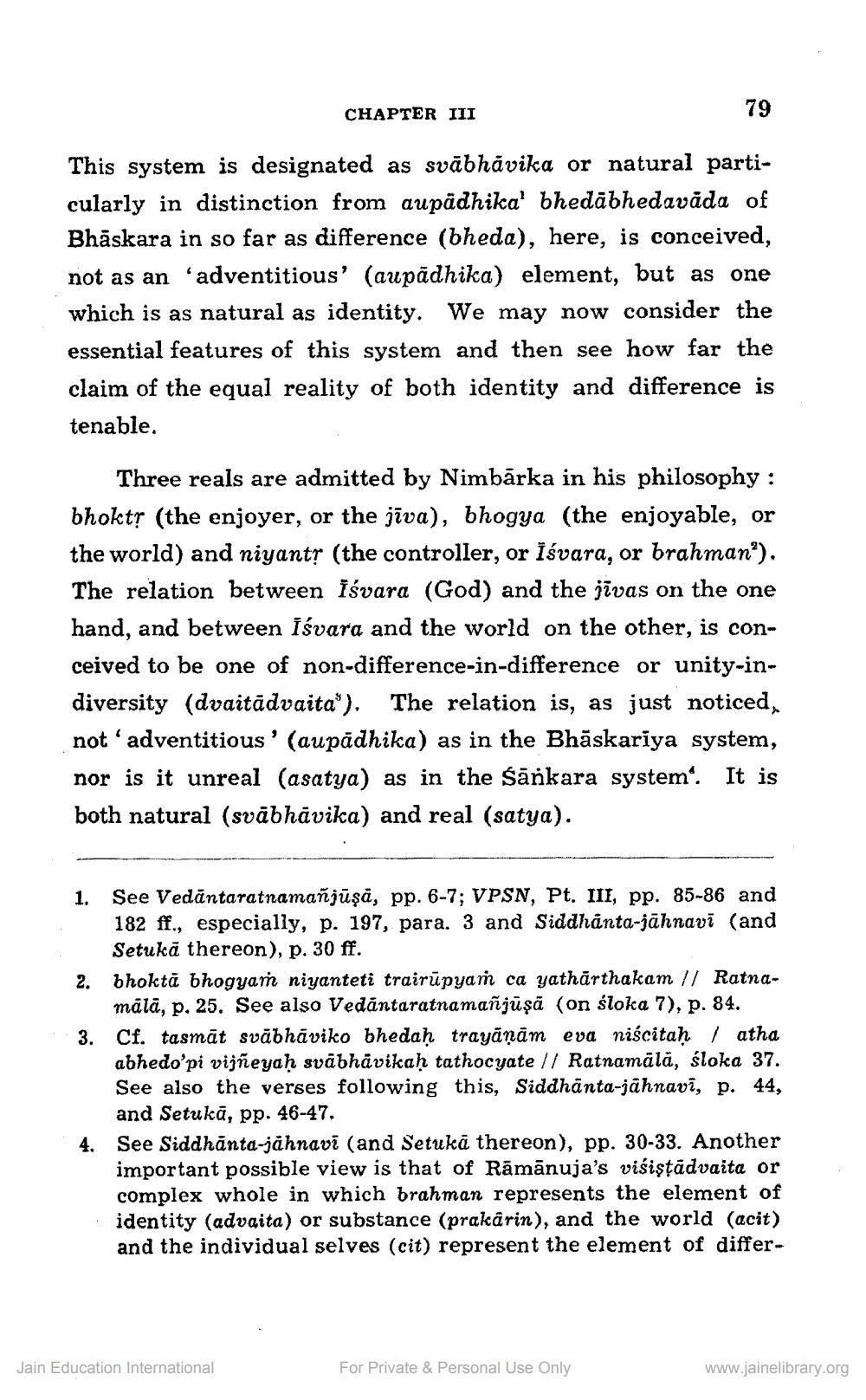________________
CHAPTER III
79
This system is designated as svābhävika or natural particularly in distinction from aupädhika' bhedābhedavāda of Bhāskara in so far as difference (bheda), here, is conceived, not as an 'adventitious' (aupādhika) element, but as one which is as natural as identity. We may now consider the essential features of this system and then see how far the claim of the equal reality of both identity and difference is tenable.
Three reals are admitted by Nimbārka in his philosophy : bhokt? (the enjoyer, or the jīva), bhogya (the enjoyable, or the world) and niyant? (the controller, or iśvara, or brahman"). The relation between iśvara (God) and the jīvas on the one hand, and between iśvara and the world on the other, is conceived to be one of non-difference-in-difference or unity-indiversity (dvaitādvaita"). The relation is, as just noticed, not adventitious' (aupādhika) as in the Bhāskariya system, nor is it unreal (asatya) as in the śānkara system". It is both natural (svābhāvika) and real (satya).
3.
1. Şee Vedāntaratnamañjūşā, pp. 6-7; VPSN, Pt. III, pp. 85-86 and
182 ff., especially, p. 197, para. 3 and Siddhanta-jähnavi (and Setukā thereon), p. 30 ff. bhoktă bhogyam niyanteti trairūpyam ca yathārthakam // Ratnamalā, p. 25. See also Vedāntaratnamañjūşā (on śloka 7), p. 84. Cf. tasmāt svābhāviko bhedah trayāņām eva niscitan / atha abhedo'pi vijñeyah svábhävikah tathocyate // Ratnamälä, śloka 37. See also the verses following this, Siddhānta-jahnavī, p. 44, and Setukā, pp. 46-47. See Siddhānta-jähnavi (and Setukā thereon), pp. 30-33. Another important possible view is that of Rāmānuja's visiştādvaita or complex whole in which brahman represents the element of identity (advaita) or substance (prakärin), and the world (acit) and the individual selves (cit) represent the element of differ
Jain Education International
For Private & Personal Use Only
www.jainelibrary.org




